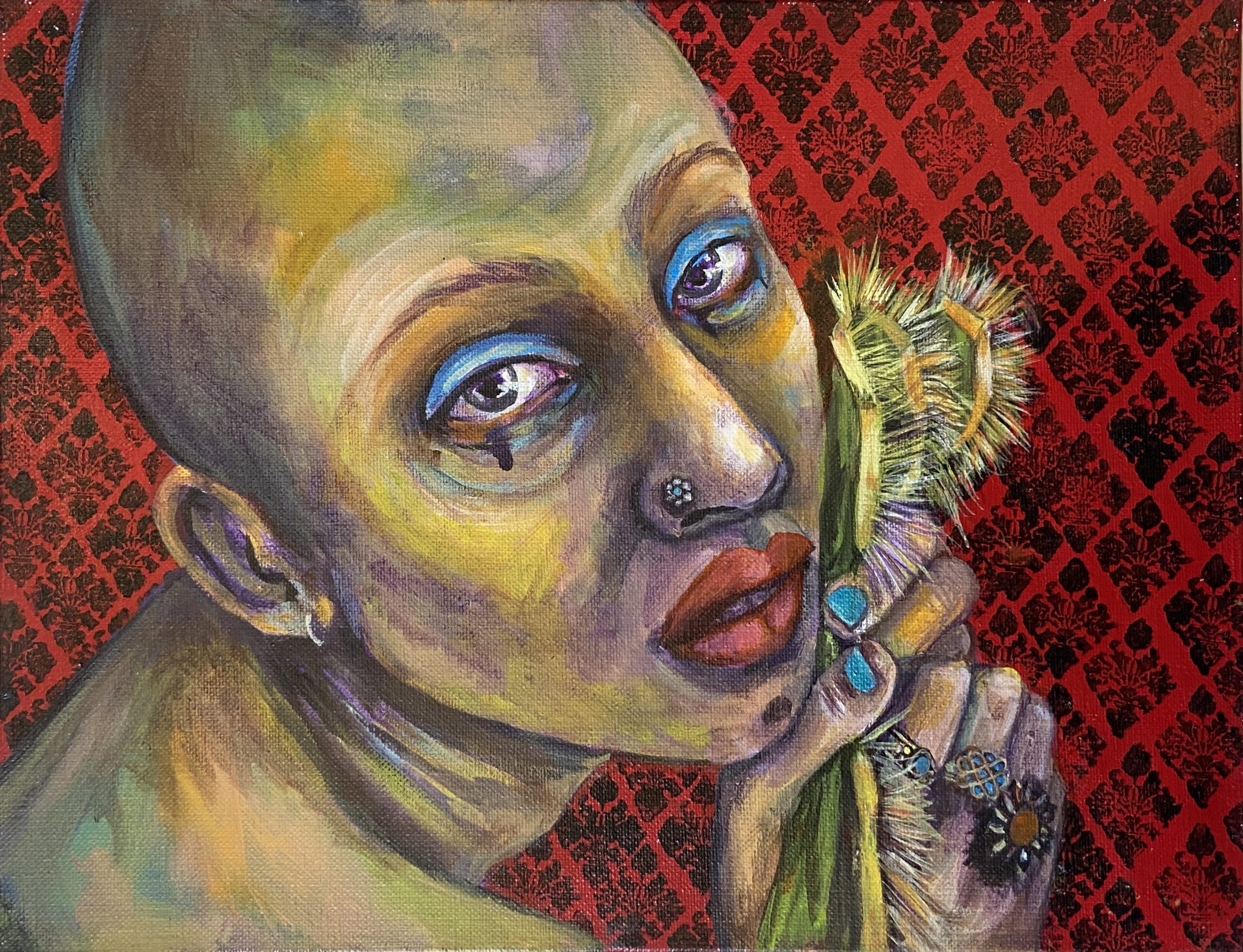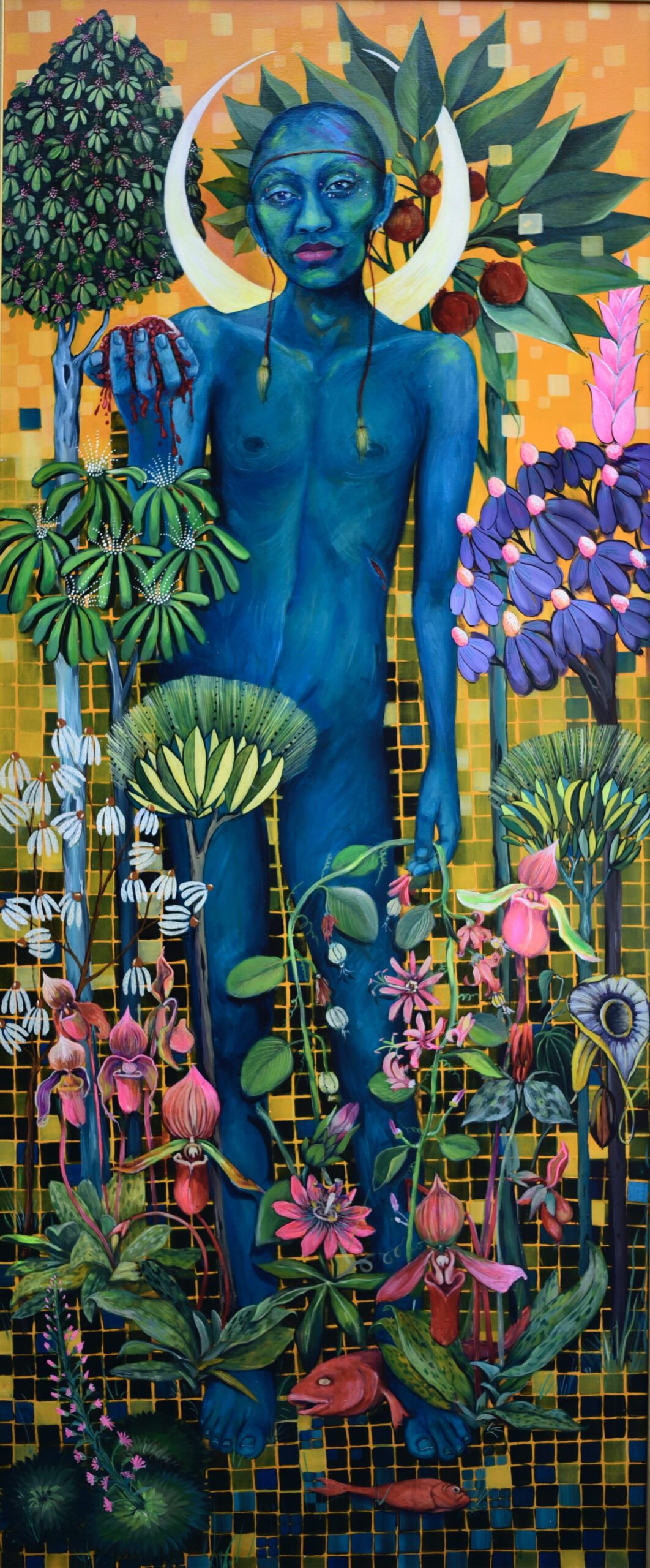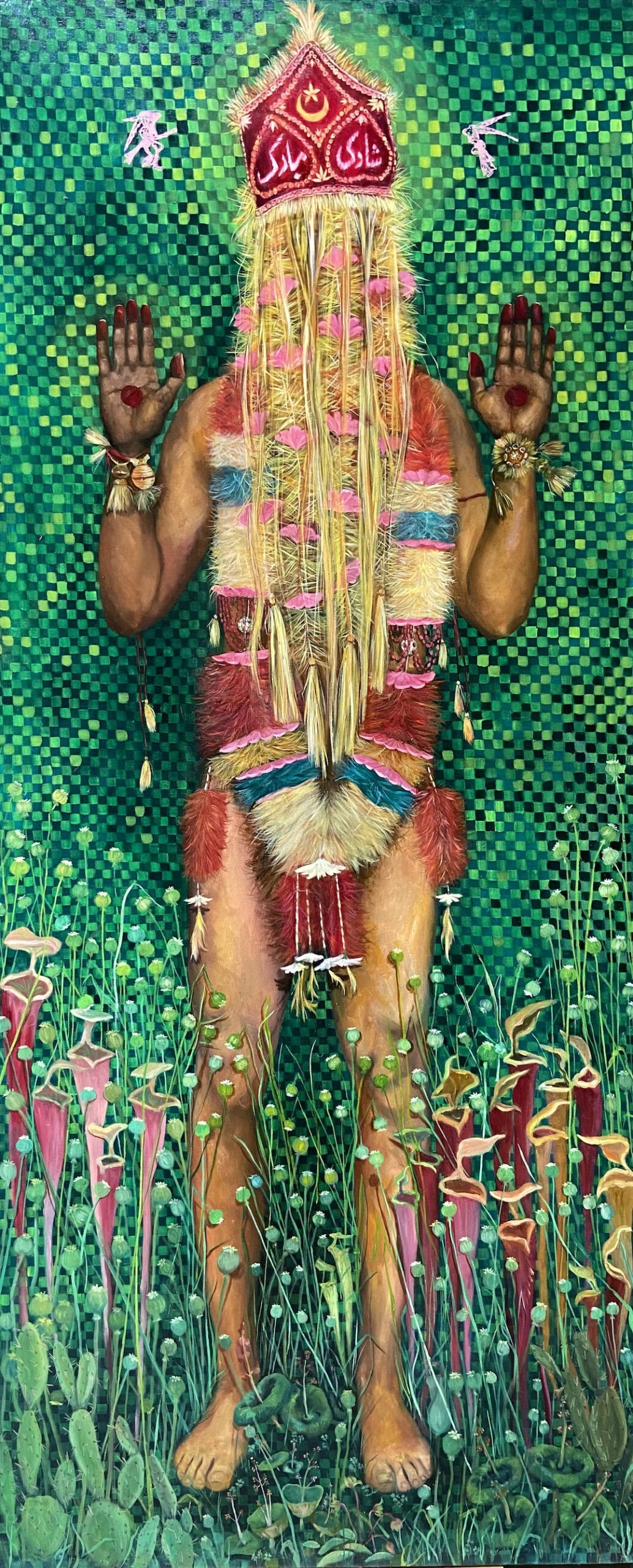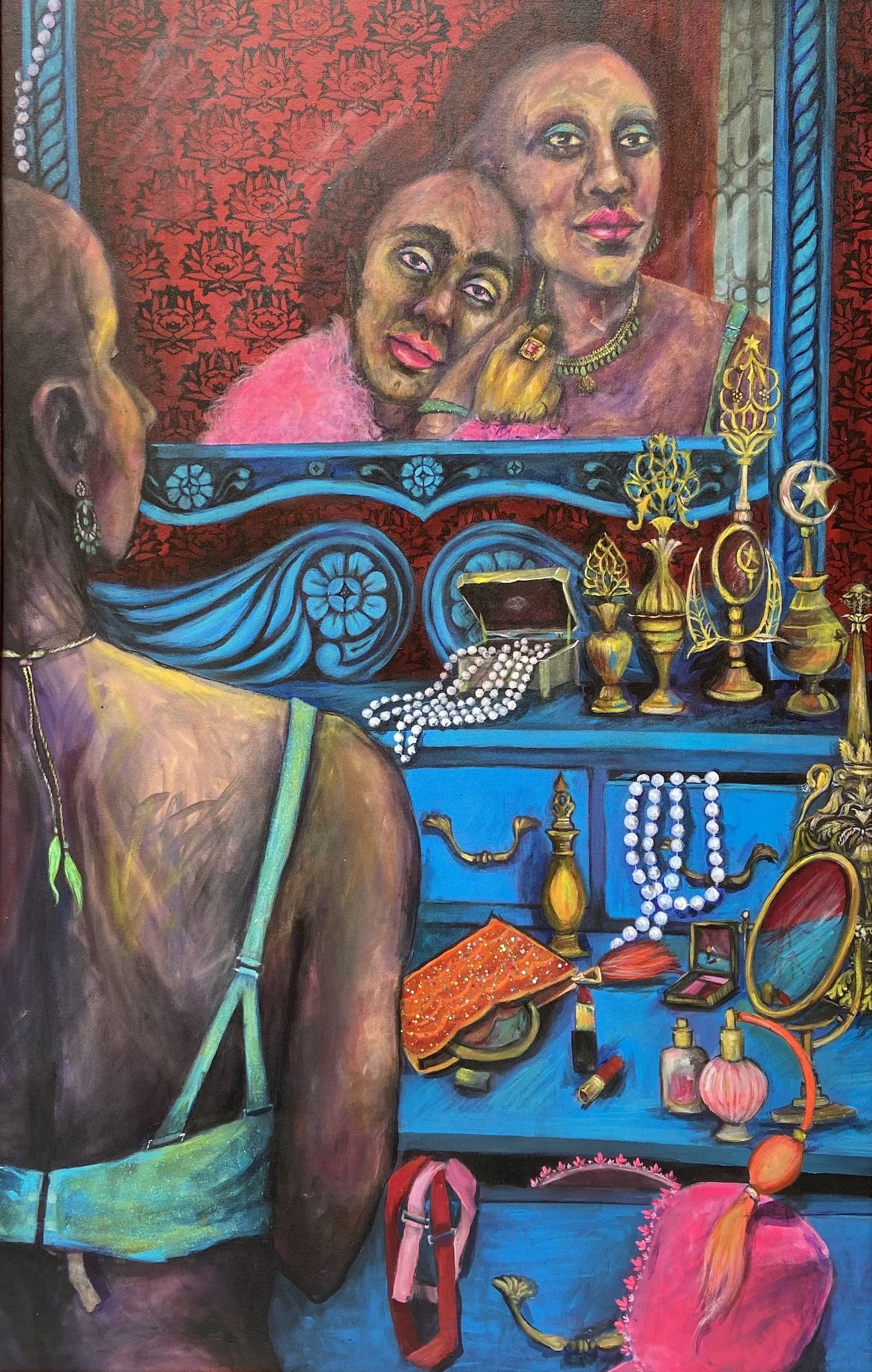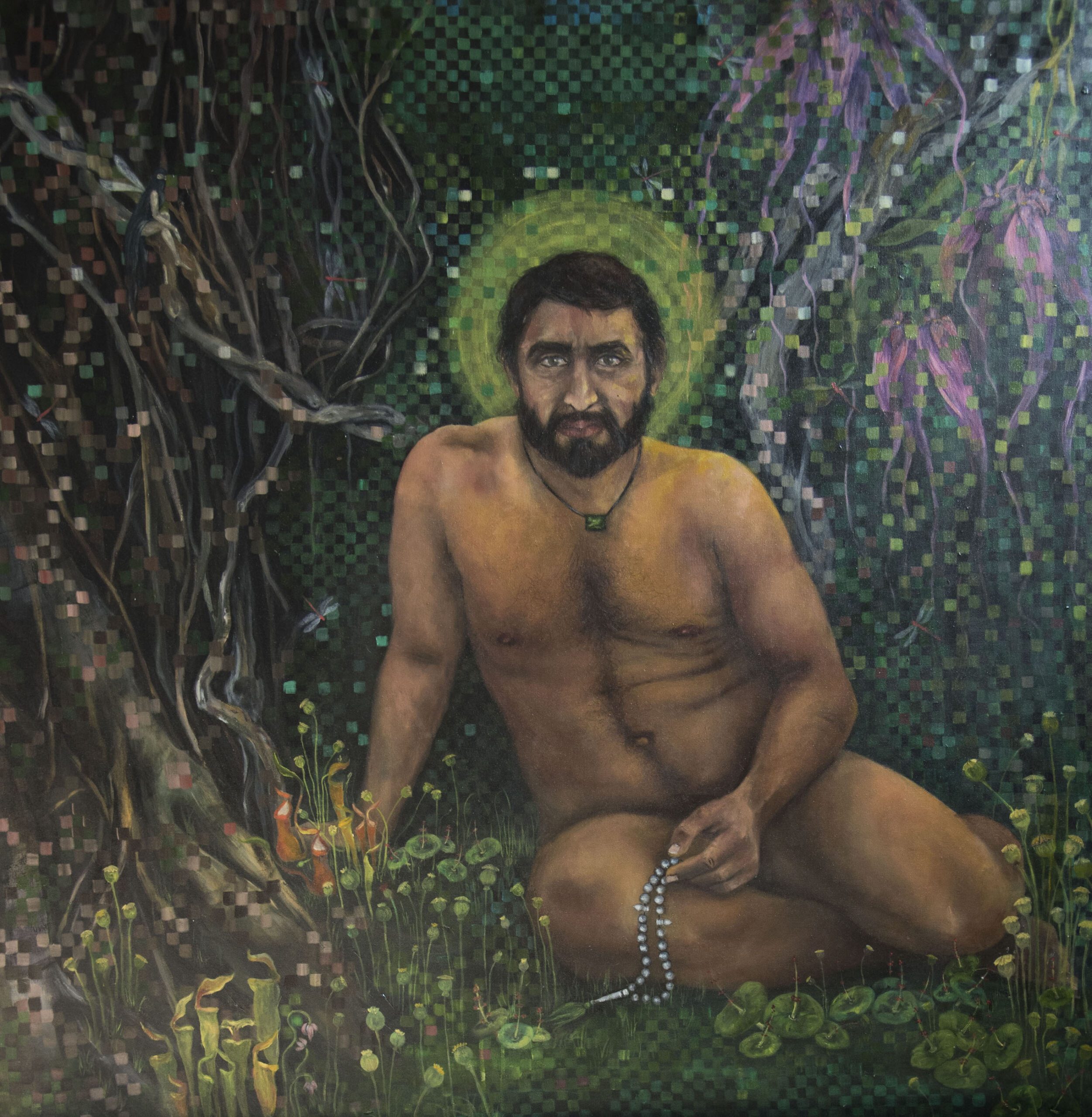The Mittal Institute welcomes two new Visiting Artist Fellows to campus for the start of their eight-week research fellowship at Harvard. The artists, who both hail from Lahore, Pakistan, include Amra Khan, an interdisciplinary visual artist, and Waleed Zafar, a visual artist and curator. The Visiting Artist Fellowship (VAF) allows mid-career visual artists from around South Asia to spend two months on the Harvard campus. The VAF differs from a typical artist residency program in that it is research-centered, providing artists with the vast resources of Harvard’s intellectual community to enhance their artistic practice.
Amra introduces herself and her artistic motivations below. We will hear from Waleed next week. Save the date to join them at the Mittal Institute’s Visiting Artist Fellows Art Exhibition on Monday, March 4, where they will share more of their work with our community.
Amra Khan
Mittal Institute: Can you introduce yourself? Who are you and what’s your artistic journey?
Amra Khan: Born 1984, Pakistan, I am an inter-disciplinary visual artist based in Lahore, Pakistan. I graduated with a distinction in painting 2008 and have a Masters in Visual Arts from National College of Arts, Lahore, with a semester École Nationale Supérieure des Beaux-Arts, Paris, France, from 2010- 2011. My practice explores the bipolarity of the binary, the dichotomies of gender, sexuality, intimacy, social conditioning and the impact of religion. More specifically, I investigate the queer and alpha male archetype in the Pakistani Muslim community through oils, acrylics, and video installations.
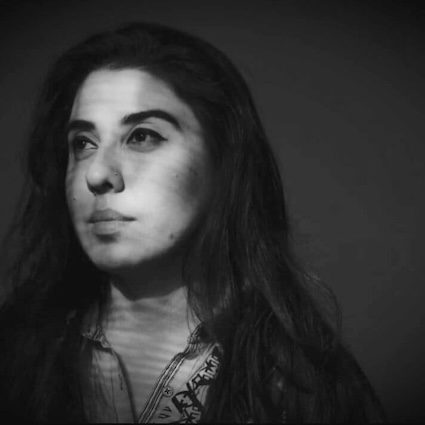
My work has been showcased globally, including at the Lahore Biennale, and ARTROOMS – International Contemporary Art Fair in London. Currently, I serve as an assistant professor at Kinnaird College for Women, Department of Fine Arts, in Lahore, Pakistan.
Mittal Institute: Can you describe your artwork?
Amra Khan: My practice investigates queer and alpha male archetypes, having two main trajectories with a brutal segregation. ‘The Vermilions’ are bright yet gritty acrylic paintings, influenced by Lahore’s underground queer culture set in domestic, congested, cluttered, intimate, theatrical boudoirs. With patterned red walls, checkered floors, featuring hints of vibrant blues and pinks. The protagonists are harshly painted endogenous figures with heavy lidded eyes, playing dress up, surrounded by vessels of adornment. ‘Ecce Homo’ are oil paintings exploring the testosterone-fuelled performativity of the machismo. Set outdoors in an ambiguous green pixelated garden amongst exotic botanicals, they are presented bare-chested in self-assured, cocky postures, dewy tanned skin, muscular bodies and thick dark hair, adorned with accessories symbolically rooted in religious, mythological, sexual and socio-economic cultures.
Mittal Institute: What are you most excited about being in Cambridge and on the Harvard campus?
Amra Khan: I look forward to engaging with a new demographic of bodies, faces and voices, documenting real life conversations, and having access to books and publications not readily available in Pakistan, due to censorship. I also wish to examine journals on the history of sexuality, Asian diaspora visual cultures and the Americas, etc. and will seek out constructive criticism from cultural critics and political commentators. The experience of professors at Harvard as researchers, writers and activists is unrivaled. I am excited about attending courses on gender studies, queer ideologies and colonial impacts, so I may better understand core concepts that build the foundations of modern social thinking.
I also look forward to having access to the Harvard Museum’s visual archives, to explore the Asian and Mediterranean art division, especially Mughal and Persian Manuscripts consisting of religious narrative, that is ‘16th century Illustrated Manuscript of the Qisas al-Anbiya (Tales of the Prophets) and the Great Ilkhanid Shahnama. I would also like to view Islamic textiles, vessels of adornment and amulets pertaining to gendered representations and practices from within South Asia. I also plan to study the works “Self Portrait with Cat” by Ernst Ludwig Kirchner and the “Male Nude” by Georg Baselitz, as I feel a closeness to these works in context of their subject and application in relation to my painting practice.
Mittal Institute: What do you expect from your time at Harvard?
Amra Khan: I hope my research facilitates my understanding of core concepts and foundations to modern social thought in context to queer and gender theory, body and fluid sexuality, migration, race, ethnicity and the development of the Muslim male archetype in South Asian diaspora. This experience will help in learning how to generate conversations in spaces subdued by religious and cultural limitations, finding footing to negotiate further discourse in more censored environments. Additionally, it will allow me to explore the use of art as a language, transfiguring the research into a repository of queer oral and visual vernacular.
Gallery of Work
Click on the image below to see the gallery!
☆ The views represented herein are those of the interview subjects and do not necessarily reflect the views of LMSAI, its staff, or its steering committee.

